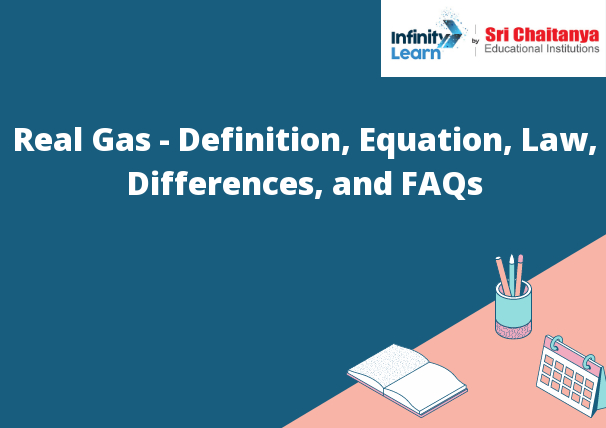Table of Contents
What Does Real Gas Refer To?
Real Gas – Definition: The term real gas is used to describe a gas that behaves like an ideal gas in many respects, but also experiences some deviations from ideal gas behavior due to the effects of intermolecular forces. They are important in describing the behavior of gases in many practical applications.

Real Gas Definition
A gas is defined as a collection of particles that are far enough apart that they do not interact with each other except through the forces of gravity and electromagnetism. A real gas is a gas that behaves according to the gas laws, which describe how the pressure, temperature, and volume of a gas are related to each other.
Ideal and Real Gas Equation
The ideal gas equation is a mathematical model that describes the behavior of an ideal gas. It is a simplified version of the gas laws, which describe the behavior of real gases. The ideal gas equation is
P V = n R T
where
- P is the pressure of the gas
- V is the volume of the gas
- n is the number of moles of gas
- R is the gas constant
- T is the temperature of the gas
Real Gas Law
The equation for the real gas law is PV = nRT, where P is the pressure, V is the volume, n is the number of moles, R is the gas constant, and T is the temperature. This equation states that the pressure, volume, and temperature of a gas are all related to each other. The real gas law is used to calculate the pressure, volume, or temperature of a gas when the other two values are known.
Ideal and Real Gases
The ideal gas law is a mathematical relationship between the pressure, volume, and temperature of an ideal gas. An ideal gas is a hypothetical gas that obeys the following equation:
PV = nRT
where
- P is the pressure of the gas
- V is the volume of the gas
- n is the number of moles of gas
- R is the ideal gas constant
- T is the temperature of the gas
In practice, gases do not always obey the ideal gas law perfectly. The deviations from ideal behavior described by the compressibility factor, z. The compressibility factor is a measure of how much a gas deviates from ideal behavior. The compressibility factor is typically close to 1 for ideal gases, but can be significantly different for real gases.
Liquefaction of Gases
Gases can be liquefied by reducing the pressure on them. When the pressure is reduced, the gas molecules have more space between them and can move more freely. This increased freedom of movement allows the gas molecules to move more quickly and to collide with each other more often. When the molecules collide with each other often, they begin to stick together, and the gas liquefies.








